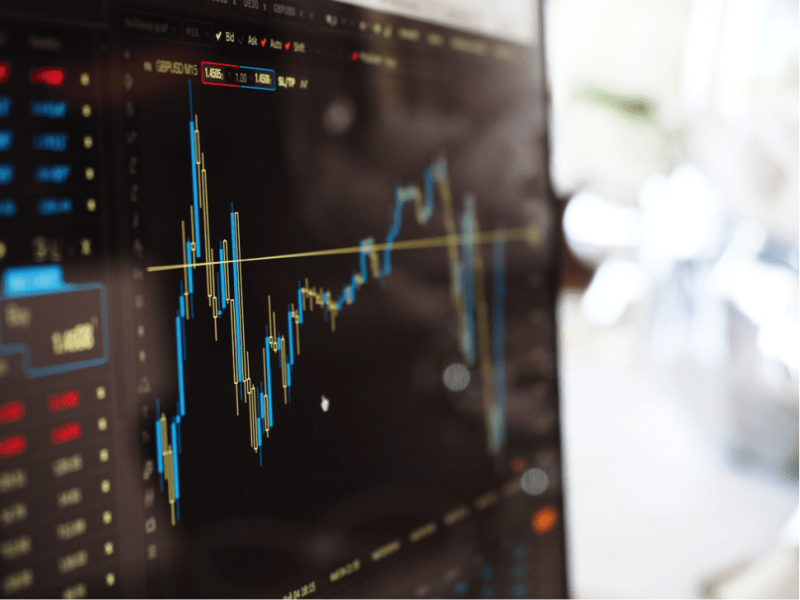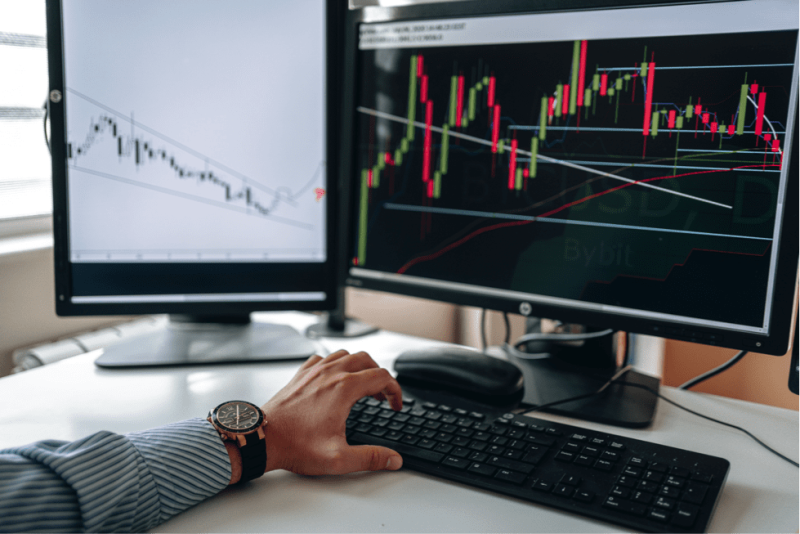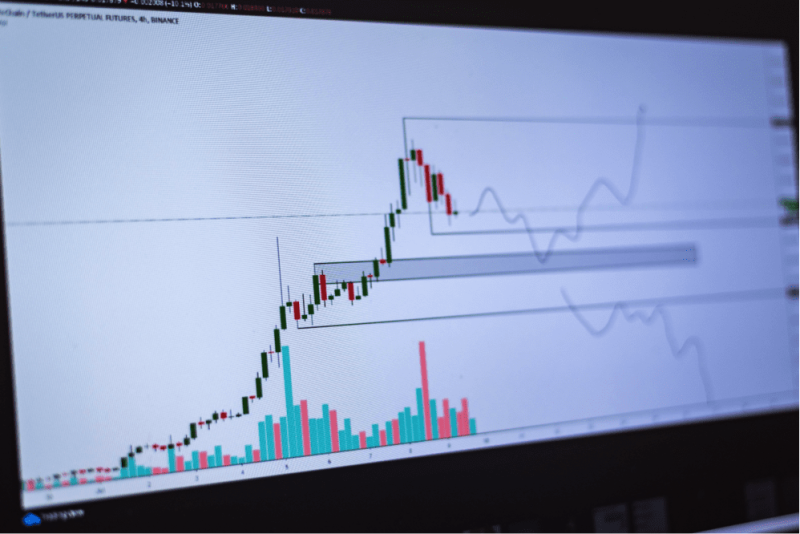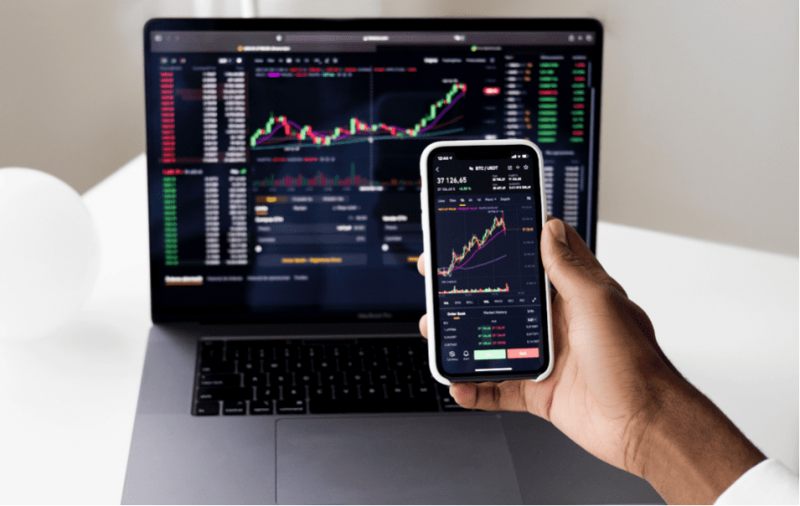
Arguably one of the most intimidating and difficult tasks for all investors and traders is determining when a particular stock will bottom out or reach a point where it can no longer decrease significantly due to a lack of volatility.
The guide we’re about to share with you below will help you identify market bottoms successfully and give you several tips on how to trade them.
Also Read: What Is the Triple Bottom Pattern
Contents
- What Is a Bottom In The Stock Market?
- What Is a False Bottom?
- Does The Entire Stock Market Usually Bottom Out At The Same Time?
- 3 Ways To Tell The Stock Has Bottomed And one Way To Trade It
- Conclusion
What Is a Bottom In The Stock Market?

In the investing realm, a market bottom refers to the lowest stock prices the underlying security (or the entire stock market in general as calculated by benchmark indexes) trades at over a specified period after a decline.
The specific period could be decades, a year, a week, or even a day, but most discussions like these focus on periods of a quarter year and more.
So, if you were staring at a stock market history price for any asset, the market bottom would be the lowest price point you can spot on the market or the lowest point of every trough-like market formation.
When specifically looking at the stock market, which usually outperforms all other financial markets (including bond yields) over the long term, the idea of market bottoms frequently comes up amidst bear markets, bull market pullbacks, and bear market corrections.
Other times, you’ll see the conversation is when stock market prices start slipping.
So, what’s the essence of learning how to find bottoms in a stock market?
Well, many investors and analysts want to know when the bottom will hit because, historically, these areas represent the best times to buy (and, on the other hand, the worst time to sell) stocks.
Theoretically, if you can successfully find the peak (after bull market rallies) or bottoms (after bear market rallies), you would stand to make stellar returns in the long run.
Always remember the old adage: SELL HIGH, BUY LOW. It remains the first investing commandment.
Unfortunately, as you may have already learned if you’ve been trading for a while, bottoms are often only identified in retrospect after the “current bear market” has already reversed. Accurately timing these price points is easier said than done.
But that doesn’t mean you should stop attempting to do so. Leagues of investors around the world, both amateur and professional, haven’t either.
What Is a False Bottom?

A false bottom appears when temporary relief causes stock prices to decline or rise for a short while, which in turn, results in investors assuming that the current bear market or correction has come to an end. If this fall or rise turns out to be temporary and the stocks’ prices begin going in the opposite direction, then the initial low would be considered a false bottom.
Expect bottoms to occur relatively frequently during bear markets after a week/month or two.
Does The Entire Stock Market Usually Bottom Out At The Same Time?
During a period of a market-wide economic crisis, stocks from most (if not all) companies, as a whole, will start falling in price. Note, however, that they won’t fall at a similar percentage or rate, and they won’t all hit their bottoms simultaneously.
Some stock sectors, such as energy, will usually tend to outperform most equities during the later stages of an economy downturn. Others, like tech, tend to be hit the hardest in times like these.
3 Ways To Tell The Stock Has Bottomed And one Way To Trade It

I know, everyone wants to buy low and sell high. Unfortunately, once you consider that stock prices also get influenced by Federal Reserve rising interest rates, economic growth & events, recession periods, and macroeconomic factors, you realize that stating with any certainty that any stock is about to bottom out will be a daunting task. Even political events matter when it comes to price moves in financial markets.
With that in mind, below, I’ll share two tips you can always use to better predict pending market bottoms and one way you can trade them.
- Double Bottom
Double bottoms are classic technical analysis patterns that represent major changes in momentum reversal and trend reversal from a prior bear market. On the price chart, it’s usually shown as a drop of an index or stock price, a temporary rebound (pullback), followed by another drop to the same level as the first drop.
This should be followed by yet another rebound to the top to validate the reversal.
- Listen To The Streets
An often overlooked trick of telling if a stock is about to bottom out is investor sentiment, which refers to how the general masses perceive the stock. But investors should be careful not to hear soundbites on business news and take what they’re spewing as gospel.
Ironically, however, there also exists an entire investment school that advocates for going against conventional wisdom. Investors in these spaces are aptly known as contrarians, and they tend to be against everything “smart money” is doing.
The end decision will be all up to you. Just sit back, listen to what other investors are saying, and wonder, can they all be right?
- Price and Volume

Some market technicians believe that volume and stock price are the two most essential indicator signals for what is likely to happen to a financial asset in the future. Stocks typically bottom out when the number of sellers for the particular stock decline overwhelmingly.
It may sound ridiculously simple, but it makes total sense when you think about it. If the number of sellers decreases, then more buyers remain. And if these buyers are willing to pay higher prices for the stock, that implies the price bottom is forming.
So go ahead and analyze the stock’s average daily trading volume. Here is an example of how you should use volume analysis. Let’s say ABC’s average daily trading volume is five million shares per day as it declines.
Over the next few days, however, the stock price appreciates while the average daily trading volume rises to 15 million shares per day. When that happens, it’s likely the underlying stock has reached its bottom.
- Dollar Cost Averaging (The Investment Strategy)

One of the safest ways to make the best of a market bottom (as recommended by wall street experts) is using the dollar cost average investing strategy. This technique especially comes in handy when the investor knows the market bottom is imminent but doesn’t know exactly when.
For those who don’t know what this equities investing strategy is, it refers to when an investor decides to invest the same amount in the same security at a specified interval regardless of the market volatility or random fluctuations in the price.
For the most part, this usually implies buying more of the stock when prices fall and buying a little of it when the price rises.
What’s more? This market investment strategy works best if all the stocks in the investors’ portfolio have strong fundamentals and valuations.
Conclusion
So your investment plan is to aim for long-term growth, and your portfolio is filled with stocks from strong companies? Then bear markets are great opportunities to start setting yourself up for impressive profits whenever the decline stops and the market turns around.
Of all investment strategies when trading a bear market, dollar cost averaging is one of the best with the highest value. Increasing your investments as the downturn perseveres allows you to scoop up more shares at lower prices.
As long as you hold out until the next bull run, your profits will exceed those of analysts and investors who either stopped investing or sold all their stocks out of fear when they saw the stocks falling.



